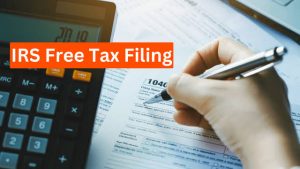The IRS has long toyed with the notion of operating its own tax filing system, in which anybody could file their taxes for free using the agency’s website. The 2022 Inflation Reduction Act’s funding has helped to make this ambitious objective a reality: For the 2024 tax filing season, a limited number of consumers in 12 states will have access to an experimental program named Direct File.
There’s still good news for the great majority of us who are not taking part in the experiment. The IRS will continue to offer two more free tax filing options: Free File and Free File Fillable Forms.

Who’s eligible for IRS Free File?
Based on age, income, and state of residence, each IRS Free File provider has its own eligibility requirements.
Taxpayers having an adjusted gross income (AGI) of $79,000 or less in 2023, including active-duty military personnel, will probably find an offer from an IRS Free File provider that meets their needs. Additionally, some providers prepare state tax returns for free. With Free File Fillable Forms, taxpayers with AGIs exceeding the cap can still file their returns for free.
Taxpayers can visit the IRS Free File webpage to identify the appropriate IRS Free File offer.
How does the IRS Free File program work?
Using the IRS website is the simplest and most reliable way to obtain Free File. Make sure you’re opening the Free File straight from the IRS’s Free File landing page because certain providers who take part in Free File might not promote their involvement or the correct IRS offer on their particular websites.
There are two methods that you can access the offered Free File offers: You can utilize the IRS’s online lookup tool or manually go through each provider. You will be asked a series of brief questions by the lookup tool on your filing status, adjusted gross income, and eligibility for specific tax credits.
